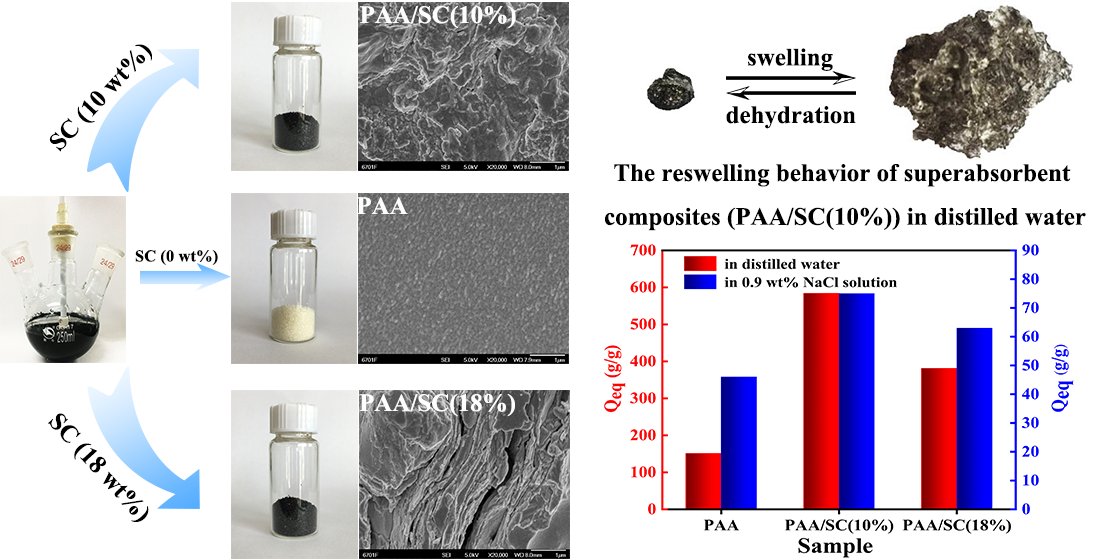Article
Version 1
This version is not peer-reviewed
Fabrication of Eco-Friendly Superabsorbent Composites based on Waste Semicoke
Version 1
: Received: 1 September 2020 / Approved: 3 September 2020 / Online: 3 September 2020 (03:46:37 CEST)
A peer-reviewed article of this Preprint also exists.
Wang, Y.; Zhu, Y.; Liu, Y.; Wang, A. Fabrication of Eco-Friendly Superabsorbent Composites Based on Waste Semicoke. Polymers 2020, 12, 2347. Wang, Y.; Zhu, Y.; Liu, Y.; Wang, A. Fabrication of Eco-Friendly Superabsorbent Composites Based on Waste Semicoke. Polymers 2020, 12, 2347.
Abstract
A series of novel superabsorbent composites of poly(acrylic acid)/semicoke were prepared by polymerization of acrylic acid using ammonium persulphate as initiator, N,N’-methylenebisacrylamide as crosslinker and semicoke which was the by-product of coal carbonizing as the inorganic components. FTIR and SEM analysis indicated that the superabsorbent composites had been successfully polymerized and the semicoke participated into the construction of 3D polymeric network. Meanwhile, the effects of initiator, crosslinker, semicoke, neutralization degree as well as the pH value were investigated, and the results showed that superabsorbent composites containing 10% of semicoke possessed the maximum water absorbency of 584 g/g in distilled water and 75 g/g in 0.9 % NaCl solution. The superabsorbent composites kept the high water absorbency within a wide pH range of 4-11, and still exhibited better re-swelling capability even after seven times. The superabsorbent composite with the excellent performance is a potential water-retaining agent used in the agriculture.
Keywords
superabsorbent composites; semicoke; water absorbency
Subject
Chemistry and Materials Science, Materials Science and Technology
Copyright: This is an open access article distributed under the Creative Commons Attribution License which permits unrestricted use, distribution, and reproduction in any medium, provided the original work is properly cited.
Comments (0)
We encourage comments and feedback from a broad range of readers. See criteria for comments and our Diversity statement.
Leave a public commentSend a private comment to the author(s)
* All users must log in before leaving a comment








